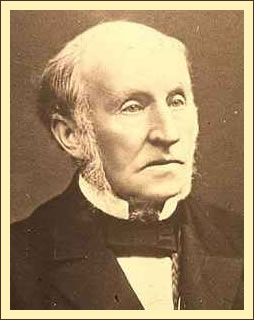|
Plastic is one of the most amazing innovations in our modern world and its ability to be molded into any shape is unmatched by any other naturally occurring substance.
|
The word 'plastic' is much older than plastic itself. The term 'plastic' was commonly used as early as the 1600's and related to something which could easily be molded or shaped. It is derived from the Greek word plastikos and the Latin word plasticus, both meaning 'to mold' or 'to take shape'. Romans imported Keratin, a protein in tortoise shell and antler, from the Orient and heated it to shape into food utensils and containers. Most likely, the word 'plastic' was used to describe substances, such as Keratin and clay, in an unhardened form.
The first thermoplastic, based on chemical modifications of natural polymers, is named 'Parkesine'. It was developed by Alexander Parkes in Birmingham, England, patented in 1856 and introduced to the world at the 1862 Great International Exhibition in London. In 1866, Parkes formed the Parkesine Company to mass produce the material. The company, however, failed and ceased trading in 1868 due to poor product quality as a result of Parkes trying to make the manufacturing process more cost effective.
|
|
|
 Alexander Parkes (1813-1890)
Alexander Parkes (1813-1890) |
|
|
Plastics are produced by chemically modifying natural substances or are synthesized from inorganic and organic raw materials. On the basis of their physical characteristics, plastics are fundamentally divided into three groups – thermosets, elastomers and thermoplastics. These groups differ primarily with regard to molecular structure, which is what determines their differing thermal behavior.
Thermosets and elastomers are formed from a polymer with three-dimensional cross-linked molecular chains, enabling them to keep their shape. Thermosets are hard and have a very tight-meshed, molecular structure while elastomers have a looser mesh, giving rise to a degree of elasticity. Curing proceeds during shaping and both are permanently hardened by cooling, after which it is no longer possible to soften the material by heating.
Thermoplastics have a linear or branched molecular structure and are not cross-linked. They are solid and flexible at ordinary temperatures but become soft and pliable for shaping at higher temperatures. After the thermoplastic is cooled and solidified, it holds its shape. Thermoplastics also have what is known as a ‘memory’ and can be repeatedly softened when heated and hardened once cooled. Repetitive heating of thermoplastics does not cause permanent change in properties or composition. Additionally, the working temperature range for thermoplastics is considerably lower than that of thermosets.
|
When describing the difference between the groups of plastics, we use the analogy between eggs and wax.
• Eggs are like thermosets and elastomers. They can be processed only once by heating.
• Wax is like thermoplastic. It can be processed repeatedly by heating.
|
It is the thermoplastic type that is used specifically for thermoforming. We will therefore focus on thermoplastics throughout the remainder of this website. |

|
Thermoplastics are organic because they contain carbon monomers. A monomer is a molecule that commonly contains carbon and hydrogen but may contain other elements, such as oxygen and nitrogen.
Thermoplastics have a wide range of properties and constant research is being carried out to develop new materials suited to an ever increasing range of applications. Depending on the additives and varied ratios used in their processing, thermoplastics can be manufactured to protect against heat and electricity, ultraviolet radiation and high impacts. They can be soft and malleable, like rubber, or hard and durable, like metal. Some thermoplastics resist temperatures up to 300°C (580°F), while others resist temperatures below -70°C (-100°F). They may also produced to be fire resistant or electroplatable.
|
The characteristics of thermoplastics vary considerably and choosing the correct type to match the specifications of any product is an important step in the production process. Generally speaking, amorphous materials such as Polystyrene and ABS are easier and less expensive to vacuum form as they have a wider forming temperature range and cool faster. Semi-crystaline and crystaline materials such as Polyethylene and Polypropylene have a narrower forming temperature range requiring a more accurate temperature control and close monitoring during the heating process. Semi-crystaline and crystaline plastics also cool slower, adding to the process time and production cost.
In the vacuum forming industry, thermoplastic in the shape of films and sheets are used. Film refers to thin-gauge plastic of up to 1.5 mm (0.060 in.), is usually supplied in rolls and processed on an automatic forming machine. Thin-guage films are commonly used to produce blister packaging. Heavy-gauge plastic, ranging in thicknesses between 3.0 mm (0.120 in.) and 12 mm (0.0470 in.), is supplied in sheets and formed on a single sheet forming machine. Heavy-guage sheets are often used for permanent items such as in shower enclosures, electronic equipment, automobiles, and medical equipment. The mid-gauge range of 1.5 mm (0.060 in.) to 3.0 mm (0.120 in.) is in a gray area and may take on characteristics of either thin gauge or heavy gauge. The thickness and edge-to-edge uniformity of an extruded plastic sheet is not perfect but tolerances can be held within 5% for thin-gauge material and 0.2 mm (0.005 in.) for heavy-gauge materials. Variations in thickness across the width of the sheet can be held to within 2% of the desired sheet thickness. |
Thermoplastic sheets and films are produced by a procedure known as extrusion. The extrusion process starts with raw plastic in the form of powder, pellets, and beads. The material is fed into a heated, revolving chamber in which it is melted and mixed with additives before passing through a series of rollers which press the plastic into a film or sheet of the desired thickness. The finished product is cooled and cut to size.
Whether we are using thin-gauge films or heavy-gauge sheets, the vacuum forming process for creating plastic products is very similar. During the Vacuum forming process, the heated plastic is stretched over or into a form or mold, causing it to thin. It is goal of the vacuum-former to stretch the thermoplastic sheet evenly, resulting in a uniform thickness of the vacuum-formed part. As the depth or height of the mold increases, the thermoplastic sheet is stretched thinner. |
|
Determining the thickness of the raw thermoplastic sheet to be used is important. A thinner sheet may yield parts that can be substantially thinner than desired. A thicker sheet, on the other hand, yields parts that are over-rated and thus more costly. To reach the desired thickness of a finished product, one must determine the difference in surface areas between the raw thermoplastic sheet and the vacuum forming mold used.
When choosing the thermoplastic for your project or type of product, it is important to select the best suited option. There are many different brands and makers supplying a wide range of plastics with different properties of hardness, elasticity, durability and resistance to shock, heat, cold or acids. Additionally, many producers of plastics stock common materials and dimensions but require a minimum order size for special properties or colors. Plastic Systems provides complete material management to help you choose the proper material at the best price and arrange for material forecasting, scheduling, procurement, quality control and warehousing.
Below is a list of thermoplastics, common to the vacuum forming industry and processed by our company on a daily basis. Click on any of the specific types for more information concerning properties, data tables and applications. |
Thermoplastics commonly used in the vacuum forming industry |
|
|

|
|
|
|